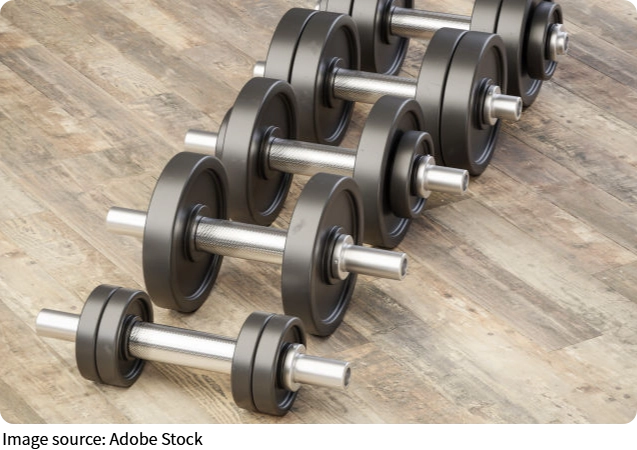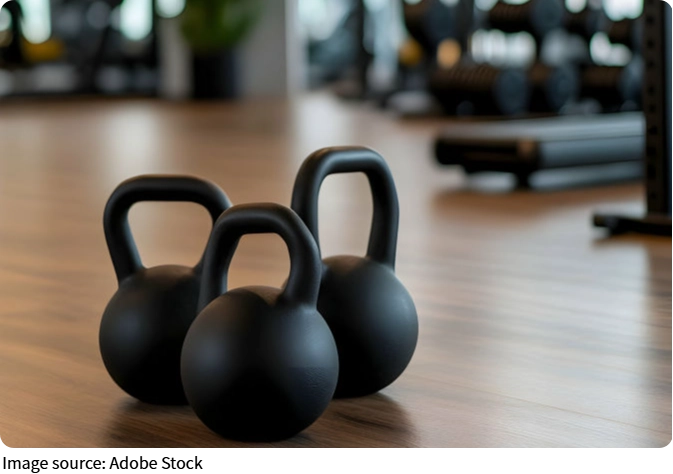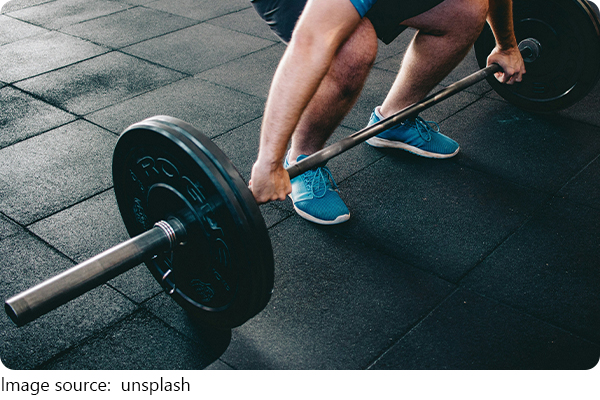Weightlifting Techniques

Hey Lykkers! Whether you're just starting your fitness journey or you're already a seasoned lifter, one thing is clear: proper weightlifting techniques are crucial. Without the right form, you risk injuries and won't get the best results from your workouts.
The good news is, by following a few simple guidelines, we can avoid these mistakes and make sure that our weightlifting routine is both effective and safe. Let's dive into the essential points to make your training smarter and more efficient!

Check Your Form: Don't Rush It!
One of the first things we need to consider when weightlifting is our form. It's easy to pick up bad habits, especially if we're learning by watching others at the gym. However, improper techniques can lead to sprains, strains, fractures, and even long-term injuries, which will only slow down your progress.
If you're new to lifting, it's essential to work with an expert like a physical therapist, personal trainer, or coach. They can help you learn the correct form right from the start. For those of us who have been lifting for a while, it's still a good idea to check our form regularly. You might not realize it, but little tweaks in your technique can make a huge difference. A coach or trainer can give you valuable feedback to ensure you're on the right track.
Start with the Right Weight
One of the biggest mistakes many beginners make is picking a weight that's too heavy, trying to lift it too quickly. It's important to start with a weight that you can lift comfortably for about 12 to 15 reps. The goal is to fatigue your muscles by the end of the set, but not to strain yourself. Starting light will allow you to focus on your form and gradually build strength without risking injury.
As you get stronger, it's important to increase the weight. But remember, don't jump up too quickly! Increase the weight gradually and continue to focus on your technique to ensure steady progress.
Perfect Your Posture for Maximum Results
Good posture is key to effective weightlifting. When we lift, we need to ensure we're moving through the full range of motion for each exercise. The better our posture, the better the results—and the lower the risk of injury. If you find yourself unable to maintain proper posture, it's a sign to reduce the weight or the number of reps. Always remember: correct form is more important than lifting heavier weights!
If you're unsure about your posture during a particular lift, don't hesitate to ask a personal trainer or a fitness expert for help. It's always better to ask than to risk injuring yourself due to poor form.

Breathing Techniques Matter
Breathing is something many of us overlook when lifting. We might feel the urge to hold our breath, especially during those tough moments. But this can cause unnecessary strain on the body. Instead, remember to breathe out when you're lifting the weight and breathe in when you lower it. This breathing technique helps keep your body stable, and it allows you to lift with more control.
Balance Your Workout: Train All Major Muscle Groups
One of the most common mistakes in weightlifting is focusing too much on one area of the body while neglecting others. For balanced strength and overall progress, we need to target all the major muscle groups: abs, glutes, legs, chest, back, shoulders, and arms. It's important to work both the front and back of the body, such as your biceps and triceps, or your quads and hamstrings, to avoid muscle imbalances. Aim for a workout routine that strengthens each area evenly.
The U.S. Department of Health and Human Services recommends that we incorporate strength training for all major muscle groups at least twice a week. So, let's make sure we're hitting everything!
Rest and Recovery Are Crucial
After a tough workout, it's essential to give your muscles time to recover. Avoid working the same muscle group on consecutive days. For example, you could do arms and shoulders one day, then focus on legs the next. This gives your muscles the necessary time to repair and grow stronger.
Rest days are just as important as the days you train. So, let's not overlook the power of recovery—it helps prevent burnout and ensures we come back stronger the next time we lift.

Weightlifting Mistakes to Avoid
We've covered the basics, but let's also look at some common mistakes that can hinder your progress and lead to injury:
• Don't skip warm-ups: Cold muscles are more prone to injury. Always take 5 to 10 minutes to warm up with light cardio, like brisk walking or other aerobic activities, before jumping into your lifting session.
• Don't rush: Weightlifting isn't about speed; it's about control. Don't be in a hurry to complete your sets. Moving too quickly increases the risk of injury and decreases the effectiveness of your workout. Take your time and focus on each movement.
• Don't overdo it: For most of us, one set to failure is enough. Overdoing it by doing too many sets or pushing too hard can lead to fatigue and overuse injuries. More sets don't always mean better results!
• Don't ignore pain: If something hurts during your workout, stop! Pain is your body's way of telling you that something isn't right. If you're feeling discomfort, back off and try again after a break or with lighter weights.
• Don't forget your shoes: The right footwear is essential for weightlifting. Shoes that provide support and grip can help prevent slips and protect your feet during heavy lifts.
Keep Training Smart
So, there you have it, Lykkers! Weightlifting is an amazing way to build strength, but only if we do it the right way. By paying attention to your form, starting with the right weight, balancing your muscle groups, and allowing for proper rest and recovery, you'll see improvements in no time.
Let's keep these tips in mind as we hit the gym, and don't forget to check in with a coach or trainer if you need guidance. Stay safe, lift smart, and let's keep getting stronger together!
-
 Viral K-Beauty Skincare!Are These K-Beauty Hits Worth Your Time?! See Which Products Actually Deliver Results!
Viral K-Beauty Skincare!Are These K-Beauty Hits Worth Your Time?! See Which Products Actually Deliver Results! -
 Whispers of MisurinaHidden Italian Lake So Peaceful, It Feels Like Time Stops—Why Lake Misurina Should Be on Your Bucket List!
Whispers of MisurinaHidden Italian Lake So Peaceful, It Feels Like Time Stops—Why Lake Misurina Should Be on Your Bucket List! -
 Serum: Who Wins?Tried Two Hot Picks! Same Feel? Same Results? Or Total Letdown?! Find Out What Really Works!
Serum: Who Wins?Tried Two Hot Picks! Same Feel? Same Results? Or Total Letdown?! Find Out What Really Works!